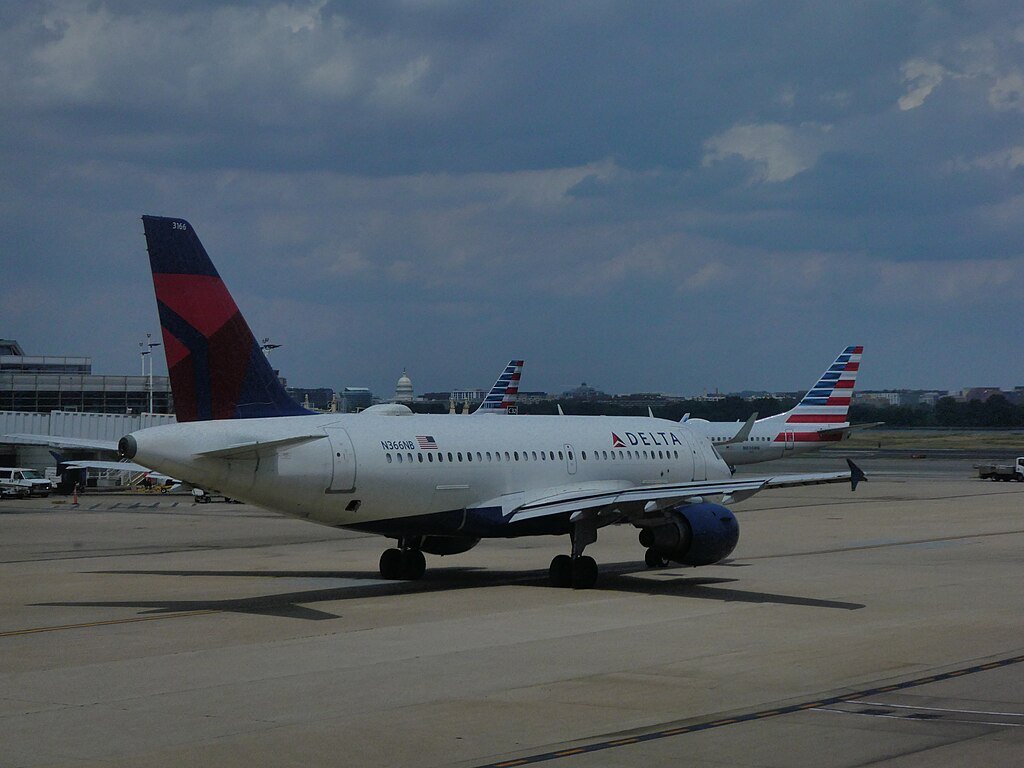[aviation news]
On March 28, 2025, a near-miss incident occurred near Ronald Reagan Washington National Airport (DCA) in Arlington, Virginia.
The National Transportation Safety Board (NTSB) recently released a preliminary report detailing the event.
The incident involved a flight of four U.S. Air Force Northrop T-38s, callsign DRAGO61, and Delta Air Lines flight DL2983, an Airbus A319-100, registered as N342NB.
This article explores the incident, its circumstances, and the ongoing investigation, based on the NTSB’s findings.
Incident Overview
At approximately 3:16 p.m. Eastern Daylight Time, DRAGO61, a military flight conducting an aerial flyby at Arlington National Cemetery, came dangerously close to DAL2983, a scheduled passenger flight departing DCA.
The two aircraft experienced a loss of separation about 0.6 miles south of the airport. Fortunately, no injuries or aircraft damage were reported.
The incident occurred under visual meteorological conditions, with clear weather: winds from 180 degrees at 6 knots, 10-mile visibility, and an overcast ceiling at 11,000 feet. Showers were reported northeast of the airport.
Air Traffic Control Operations
The Ronald Reagan Washington National Airport Traffic Control Tower (DCA ATCT) reported moderate traffic volume and complexity at the time. The tower had eight certified professional controllers (CPCs) and one CPC-in-training (IT) on duty, with six positions staffed.
Six CPCs and one controller-in-charge (CIC) were actively working, while two CPCs and one CPC-IT were available.
Notably, staffing constraints meant no Operations Supervisor (OS) was on duty, as the scheduled OS had completed their shift.
The CIC provided general oversight instead.The Potomac Consolidated Terminal Radar Approach Control (PCT TRACON), specifically the DEALE radar sector, was managing DRAGO61’s air traffic services during the incident.
In the PCT TRACON Mount Vernon area, 15 CPCs and one OS were on duty, with eight positions staffed by seven CPCs and one OS.
Four CPCs were available, while four others were assigned to other duties.

Investigation Underway
Following the incident, the NTSB formed an Air Traffic Control (ATC) investigative group, including representatives from the Federal Aviation Administration (FAA), the National Air Traffic Controllers Association (NATCA), and the U.S. Air Force.
The investigation is analyzing critical data, including Automatic Dependent Surveillance–Broadcast (ADS-B) data, audio recordings, and other FAA-provided documentation.
These materials are under review to determine the factors contributing to the loss of separation.
Key Factors and Next Steps
While the NTSB’s preliminary report does not assign blame, it highlights staffing constraints and operational oversight as potential areas of focus.
The absence of an Operations Supervisor and reliance on a controller-in-charge for oversight may have influenced the incident’s circumstances.
The investigation will likely examine air traffic control procedures, coordination between military and civilian flights, and adherence to separation standards.
This near miss underscores the importance of robust air traffic management, especially at busy airports like DCA, located near sensitive airspace.
The NTSB’s final report, expected after a thorough analysis, will provide detailed findings and recommendations to enhance aviation safety.
As the investigation continues, stakeholders await insights to prevent similar incidents. The collaboration between the NTSB, FAA, NATCA, and the Air Force ensures a comprehensive review, prioritizing the safety of passengers and military personnel alike.

Share this content:

